Wanjia Liu
Fast Retinomorphic Event Stream for Video Recognition and Reinforcement Learning
May 19, 2018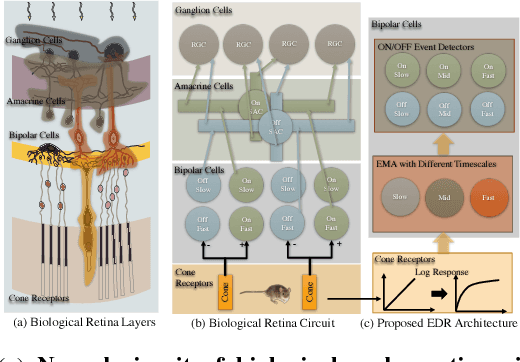
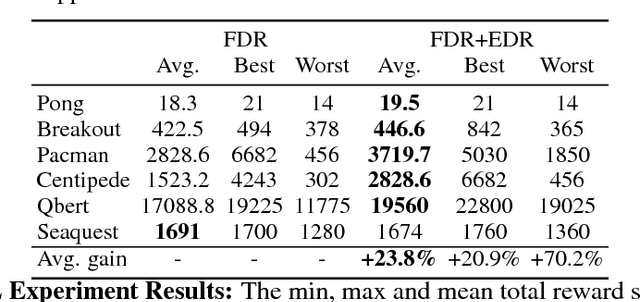
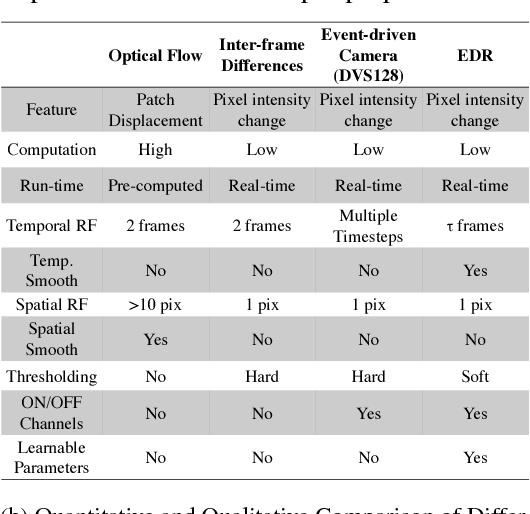
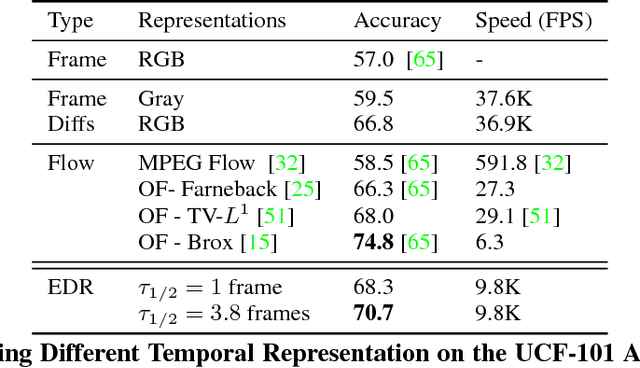
Abstract:Good temporal representations are crucial for video understanding, and the state-of-the-art video recognition framework is based on two-stream networks. In such framework, besides the regular ConvNets responsible for RGB frame inputs, a second network is introduced to handle the temporal representation, usually the optical flow (OF). However, OF or other task-oriented flow is computationally costly, and is thus typically pre-computed. Critically, this prevents the two-stream approach from being applied to reinforcement learning (RL) applications such as video game playing, where the next state depends on current state and action choices. Inspired by the early vision systems of mammals and insects, we propose a fast event-driven representation (EDR) that models several major properties of early retinal circuits: (1) logarithmic input response, (2) multi-timescale temporal smoothing to filter noise, and (3) bipolar (ON/OFF) pathways for primitive event detection[12]. Trading off the directional information for fast speed (> 9000 fps), EDR en-ables fast real-time inference/learning in video applications that require interaction between an agent and the world such as game-playing, virtual robotics, and domain adaptation. In this vein, we use EDR to demonstrate performance improvements over state-of-the-art reinforcement learning algorithms for Atari games, something that has not been possible with pre-computed OF. Moreover, with UCF-101 video action recognition experiments, we show that EDR performs near state-of-the-art in accuracy while achieving a 1,500x speedup in input representation processing, as compared to optical flow.
Semi-Supervised Learning with the Deep Rendering Mixture Model
Dec 06, 2016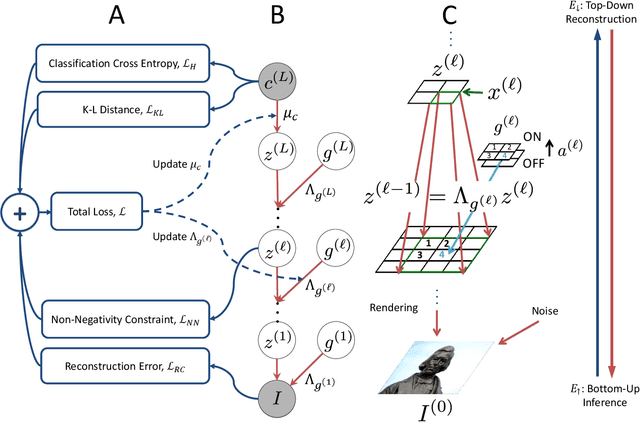
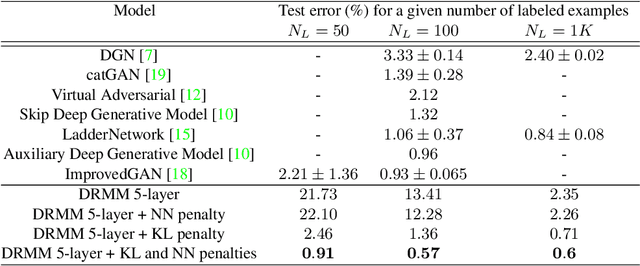


Abstract:Semi-supervised learning algorithms reduce the high cost of acquiring labeled training data by using both labeled and unlabeled data during learning. Deep Convolutional Networks (DCNs) have achieved great success in supervised tasks and as such have been widely employed in the semi-supervised learning. In this paper we leverage the recently developed Deep Rendering Mixture Model (DRMM), a probabilistic generative model that models latent nuisance variation, and whose inference algorithm yields DCNs. We develop an EM algorithm for the DRMM to learn from both labeled and unlabeled data. Guided by the theory of the DRMM, we introduce a novel non-negativity constraint and a variational inference term. We report state-of-the-art performance on MNIST and SVHN and competitive results on CIFAR10. We also probe deeper into how a DRMM trained in a semi-supervised setting represents latent nuisance variation using synthetically rendered images. Taken together, our work provides a unified framework for supervised, unsupervised, and semi-supervised learning.
 Add to Chrome
Add to Chrome Add to Firefox
Add to Firefox Add to Edge
Add to Edge